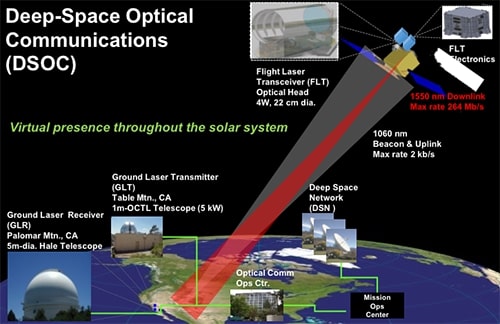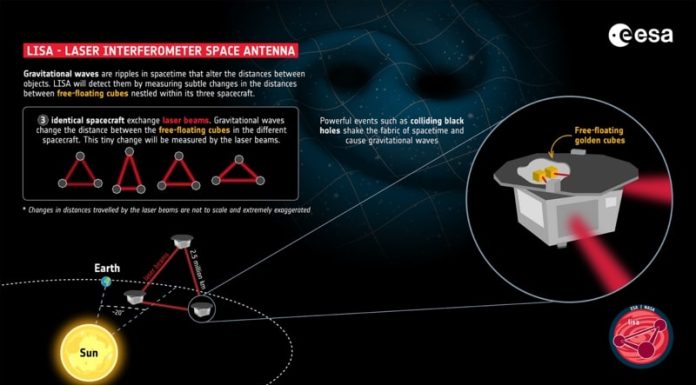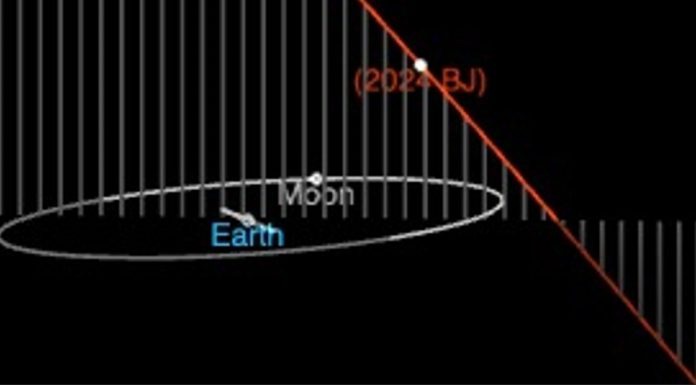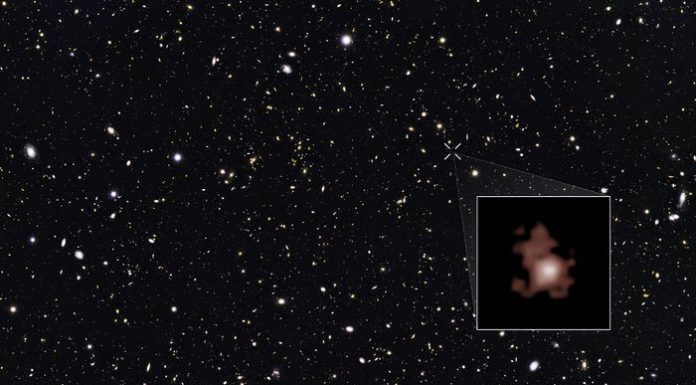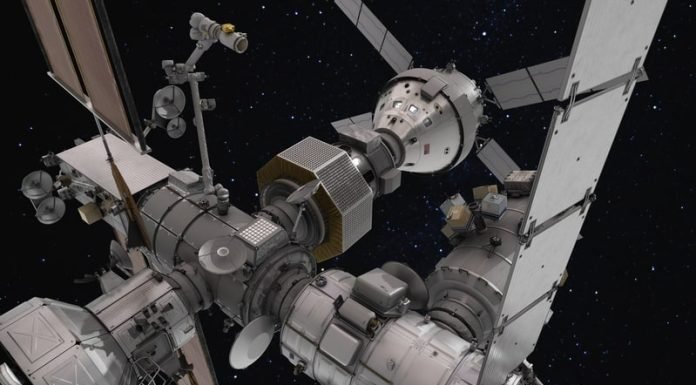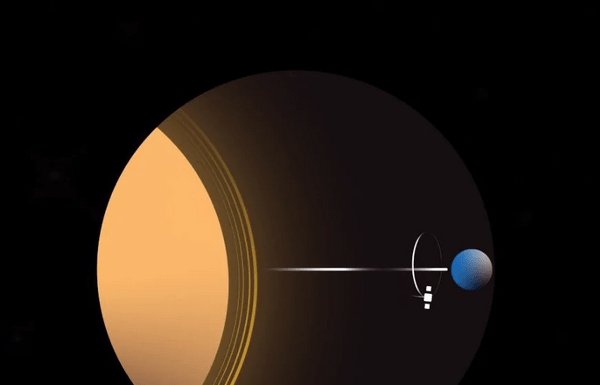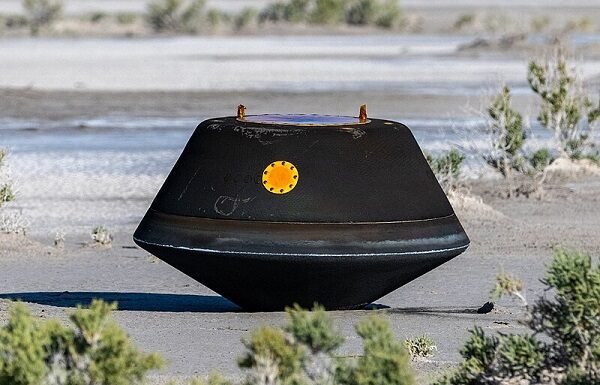A study involving measurements by James Webb Space Telescope (JWST) suggests that the exoplanet 55 Cancri e has a secondary atmosphere outgassed by magma ocean. Instead of vapourised rock, the atmosphere may be rich in CO2 and CO. This...
At least seven coronal mass ejections (CMEs) from the sun have been observed. Its impact arrived on Earth on 10 May 2024 and will continue through 12 May 2024.
The activity at sunspot AR3664 was captured by the GOES-16...
Voyager 1, the most distant man-made object in history, has resumed sending signal to the Earth after a gap of five months. On 14 November 2023, It had stopped sending readable science and engineering data to Earth following a...
Total solar eclipse will be observed in North America continent on Monday 8th April 2024. Beginning Mexico, it will move across the United States from Texas to Maine, ending in Canada’s Atlantic coast.
In the USA, while the partial solar...
A new image of the “FS Tau star system” taken by the Hubble Space Telescope (HST) has been released on 25 March 2024. In the new image, jets emerge from the cocoon of a newly forming star to blast across...
The formation of our home galaxy Milky Way began 12 billion years ago. Since then, it has undergone a sequence of mergers with other galaxies and grew in mass and size. The remnants of building blocks (i.e., galaxies that...
In the last 500 million years, there have been at least five episodes of mass extinctions of life-forms on the Earth when more than three-quarters of the existing species got eliminated. The last such large-scale life extinction occurred due...
James Webb Space Telescope (JWST) has taken near-infrared and mid-infrared images of the star-forming region NGC 604, located nearby in the neighbourhood of home galaxy. The images are most detailed ever and offer unique opportunity to study high concentration...
Europa, one of the largest satellites of Jupiter has a thick water-ice crust and a vast subsurface saltwater ocean beneath its icy surface hence suggested to be one of the most promising places in the solar system to harbour...
In a study reported recently, astronomers observed the SN 1987A remnant using James Webb Space Telescope (JWST). The results showed emission lines of ionized argon and other heavily ionised chemical species from the centre of the nebula around SN...
LignoSat2, the first wooden artificial satellite developed by Kyoto University’s Space Wood Laboratory is scheduled to be jointly launched by JAXA and NASA this year will have outside structure made of Magnolia wood.
It will be a small-sized satellite (nanosat)....
Radio frequency based deep space communication faces constraints due to low bandwidth and increasing need of high data transmission rates. Laser or optical based system has potential to break the communication constraints. NASA has tested laser communications against extreme...
The Laser Interferometer Space Antenna (LISA) mission has received the go ahead of European Space Agency (ESA). This paves the way for developing the instruments and spacecrafts commencing January 2025. The mission is led by ESA and is a...
Astronomers have recently reported detection of such a compact object of about 2.35 solar masses in the globular cluster NGC 1851 in our home galaxy Milkyway. Because this is at the lower end of “black hole mass-gap", this compact object...
On 27 January 2024, an airplane-sized, near-Earth asteroid 2024 BJ will pass Earth at a closest distance of 354,000 Km.
It will come as close as 354,000 Km, about 92% the average lunar distance.
The closest encounter of 2024 BJ with the Earth...
Astronomers have detected the oldest (and the most distant) black hole from the early universe which dates from 400 million years after the big bang. Surprisingly, this is about a few million times the mass of Sun. Under the...
JAXA, Japan’s space agency has successfully soft landed “Smart Lander for Investigating Moon (SLIM)” on lunar surface. This makes Japan fifth country to have lunar soft-landing capability, after the US, the Soviet Union, China and India.
The mission aims to...
Two decades ago, two Mars rovers Spirit and Opportunity landed on Mars on 3rd and 24th January 2004, respectively to look for evidence that water once flowed on the surface of the Red Planet. Designed to last just 3...
Fast Radio Burst FRB 20220610A, the most powerful radio burst ever observed was detected on 10 June 2022. It had originated from a source that existed 8.5 billion years ago when the universe was just 5 billion years old...
The lunar lander, ‘Peregrine Mission One,’ built by ‘Astrobotic Technology’ under NASA’s ‘Commercial Lunar Payload Services’ (CLPS) initiative was launched into space on 8 January 2024. The spacecraft has since suffered propellant leak. Hence, Peregrine 1 can no longer soft...
UAE’s MBR Space Centre has collaborated with NASA to provide an airlock for the first lunar space station Gateway that will orbit the Moon to support long-term exploration of the Moon under NASA’s Artemis Interplanetary Mission. An Air lock is an...
The solar observatory spacecraft, Aditya-L1 was successfully inserted in Halo-Orbit about 1.5 million km away from earth on 6th January 2024. It was launched on 2nd September 2023 by ISRO.
The Halo orbit is a periodic, three-dimensional orbit at Lagrangian point L1 involving Sun, Earth...
Stars have a life cycle spanning a few million to trillions of years. They are born, undergo changes with the passage of time and finally meet their end when fuel runs out to become a very dense remanent body....
ISRO has successfully launched the satellite XPoSat which is world’s second ‘X-ray Polarimetry Space Observatory’. This will carry out research in space-based polarisation measurements of X-ray emission from various cosmic sources. Earlier, NASA had sent ‘Imaging X-ray Polarimetry Explorer...
NASA’s first asteroid sample return mission, OSIRIS-REx, launched seven years ago in 2016 to near-Earth asteroid Bennu has delivered the asteroid sample that it collected in 2020 to Earth on 24th September 2023. After releasing the asteroid sample into...










































